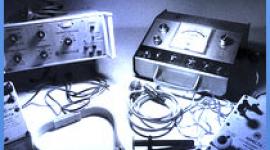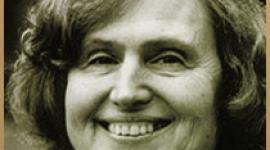Why Electric Shock Treatment Still Exists
Sunday Times of London
DECEMBER 09 2001
 It has a brutal history. We don't know how, or even if, it works. So why do we still give electric shocks for depression? Kathy Brewis investigates.
It has a brutal history. We don't know how, or even if, it works. So why do we still give electric shocks for depression? Kathy Brewis investigates.
Some countries refuse to use it. Scientists have little idea how it works, and precious few doctors have been properly trained to administer it. But in contrast with much of the rest of Europe, patients in Britain are routinely sedated and shot through with electricity, in an attempt to fix their troubled minds. The horror stories surrounding electroconvulsive therapy (ECT) abound. This is the poet Sylvia Plath's grimly eloquent account from her autobiographical novel The Bell Jar: ''Don't worry,' the nurse grinned down at me. 'Their first time, everybody's scared to death.' 'I tried to smile, but my skin had gone stiff, like parchment. Doctor Gordon was fitting two metal plates on either side of my head. He buckled them into place with a strap that dented my forehead, and gave me a wire to bite.
'I shut my eyes. There was a brief silence, like an indrawn breath. Then something bent down and took hold of me and shook me like the end of the world. Whee-ee-ee-ee-ee, it shrilled, through an air crackling with blue light, and with each flash a great jolt drubbed me till I thought my bones would break and the sap fly out of me like a split plant. 'I wondered what terrible thing it was that I had done.'
In the popular mind, ECT is barbaric, a brutal abuse of power by men in white coats. Its portrayal in films such as One Flew over the Cuckoo's Nest and famous real-life cases from the 1950s and 60s have only added to the guilty verdict. Ernest Hemingway, given about a dozen shocks in an attempt to ease his recurring depression, found the resulting memory loss unbearable and shot himself a few days later. 'What is the sense of ruining my head and erasing my memory, which is my capital, and putting me out of business?' he asked. Vivien Leigh underwent a series of shock treatments as part of a 'care' regime for manic depression, which left her, as her husband Laurence Olivier put it, with 'slight but noticeable personality changes... She was not, now that she had been given the treatment, the same girl that I had fallen in love with'.
So far, so damning. So how can ECT continue to be used as a treatment for depression, albeit with modifications (now the patient is anaesthetised, and a muscle relaxant is given to prevent the body jolting and possible broken bones)? The answer is simple: it is still used because most psychiatrists believe that it does some good - that it can even save lives. The Royal College of Psychiatrists, the professional body to which all psychiatrists belong, claims an 80% success rate for the estimated 12,000 Britons who receive ECT for severe depression each year. But there is a reason why ECT has been so demonised, beyond the violent images and a level of distrust of psychiatrists: nobody has adequately explained what goes on when those 220 volts zip through your brain. 'It works, we're just not sure how,' psychiatrists say. One doctor described it thus: 'Psychiatrists are constrained to tuning very high-tech internal combustion engines, but they are only allowed to listen to the exhaust note. Sometimes slamming the bonnet makes it go. If it works, why not?' Which sounds scarily cavalier.
There has, however, been a scientific drive to understand ECT. In recent years, various hypotheses have been put forward to explain how ECT might be acting on the brain, all of which assume that depression is a physical illness. One theory is that inducing a seizure causes a shift in the body's neuroendocrine system so that stress hormones are kept in balance. Another is that artificially inducing a seizure somehow taps into the brain's natural ability to stop seizures. A third idea is that the electricity somehow changes the level of chemicals in the brain. These are tiny pieces of an intricate jigsaw that may or may not fit together one day.
Now leading researchers here and in the United States are making an extraordinary claim: ECT works by causing brain cells to be renewed. It has been known since the mid-1990s that new nerve cells (neurones) form throughout a person's life in the hippocampus, a brain structure known to be involved in memory and emotion. An American team led by Professor Ronald Duman at Yale university, and others, suggest that depression, particularly if it is stress-associated, results from the death of vulnerable neurones in a region of the hippocampus called CA3. Some of the features seen in depression, such as poor concentration and memory, could reflect this loss of nerve cells - indeed, brain scans of severely depressed patients show that the hippocampus is smaller than it should be. Both antidepressants and ECT have been shown to induce brain cells to produce a protein called brain-derived neurotropic factor (BDNF), which promotes the growth, repair and resilience of neurones. It has been observed that, following ECT, new neurones form and existing ones sprout new connections. Various studies taken together have led to a dramatic hypothesis. 'The research suggests depression causes neuronal cells to be damaged and antidepressant treatments cause the neurones to be regenerated,' says Professor Ian Reid of Dundee university. 'It may be that some of the treatments that people think are rather crude are in fact quite effective rescuers of the dying neurone.'
If this turns out to be true, the potential applications could go beyond treating depression to more obvious neurodegenerative conditions such as Alzheimer's and Parkinson's diseases.
ECT's origins go back to the turn of the 20th century, when mentally ill patients tended to be locked up in asylums and left. Psychiatrists started to experiment with a variety of new 'treatments' for the severely ill, including lobotomy and temporary, insulin-induced coma. One doctor had the idea, based on the (untrue) belief that epilepsy and schizophrenia could not coexist, of injecting epileptics with serum from schizophrenic patients, and injecting schizophrenics with the stimulant Metrazol to induce a seizure. The latter was a hideous procedure - the patient would convulse violently and often vomit - but for mysterious reasons it tended to reduce the symptoms.
In the 1930s, Ugo Cerletti, an Italian psychiatrist, wondered about using electricity as a way to induce a seizure more quickly than with Metrazol. With his assistant, Lucio Bini, he experimented on dogs and found that, yes, electricity could indeed induce a fit. They also sent their assistants to observe pigs being stunned by electricity before slaughter - clearly it was important to get the dose right. By 1938, Cerletti and Bini felt ready to test their method on a human. Their subject was a Milanese man who had been found mumbling incoherently to himself in the railway station. Electrodes were applied to his temples, an orderly put a rubber tube between his teeth to stop him biting his tongue, and the electricity was applied. The patient's muscles jolted but he was not rendered unconscious. 'Not again, it's murderous!' he pleaded - but they carried on. After several shocks they stopped, and he spoke more coherently. After 10 treatments, they claimed, the patient was released 'in good condition and well-oriented', and a year later he had not relapsed.
Now, 63 years later, a refined version of ECT is the treatment of choice for severe depression that has not responded to other treatments, such as antidepressant drugs and psychotherapy. Each year, thousands of people receive ECT and quietly get on with their lives afterwards.
One such person is Professor John Lipton, 62, a university lecturer in the north of England. A softly spoken man, he describes how, 20 years ago, the pressures of academia led to a bout of depression so severe that he more or less ceased to function and finally attempted suicide. 'I bypassed the GP to the extent of overdosing and was taken to the local psychiatric hospital,' he says. 'I was lucky in that there was a new psychiatrist who had worked in research. He suggested ECT. When you're depressed, you're not all that rational. You don't have confidence in your own judgment. You're in a high state of fear, so any rumours you've heard about treatment are likely to be accentuated. I knew that ECT can affect the memory badly. I thought it might damage my ability to work.' The psychiatrist suggested that Lipton should have unilateral treatment, with electrodes placed on one side of his head only, to cause less memory loss.
'You have a headache afterwards,' he recalls. 'It does affect your memory quite badly at the time. It's hard to tell if it's disorientating. If you are depressed, you're not really noticing much that's going on, anyway. A colleague came to see me and it became apparent that he had visited me the previous week, but I had no recollection of it.'
Lipton was in hospital for more than three months. Part of his recovery, he admits, may have been the removal of everyday pressures. 'I can only say that I gradually felt easier in a way that was other, more than just being in there. I began to see things in a more positive light. Actually, it's very civilised. You walk along a corridor, wait outside the treatment room, you go in, lie down, they make you comfortable, and then they inject you. You wake up and you're on a trolley. You collect a series of little bruises from the injections. There's no doubt that your memory does suffer, but I've survived perfectly well in academic practice for 20 years since.'
His memory impairment continues - though it is usually referred to in psychiatric literature as 'temporary'. 'I feel as though there's a part of my memory system that doesn't retain very well,' he says. 'My wife will tell me things that I've said to her and I've no recollection of ever having known it, let alone said it. My capacity to remember things of a trivial sort has disappeared. If I want to be sure to remember something when I go home, I put a note in my sock. I associate it with that time because I had an exceptionally good memory before. But it doesn't seriously impinge on my life.' Not that he wants everybody to know about it, though - he asked that his name be changed for this article.
If this sounds like too easy an acceptance of the side effects of ECT, consider how bad a state Lipton was in before the treatment. His physical symptoms included stomach cramps, a constant feeling of heaviness, tiredness and anxiety and a perpetual state of terror. 'Everything frightens you and you don't know why you're frightened, but you are,' he says. The symptoms became worse, to the extent that he had to take a spare pair of socks to work every day because by mid-morning his feet were squelching around in perspiration. He also had severe dandruff. Finally it was too much. 'I thought, 'I can't stand months of this, feeling permanently suicidal while I wander around hoping I might recover - let's get out of it now while I've still got the courage to do it.''
Yet ECT has many detractors. Campaigning bodies such as the Citizens Commission on Human Rights (CCHR), an offshoot of the Church of Scientology (which is opposed to most aspects of psychiatry) wants ECT to be banned. Brian Daniels from CCHR will tell you that ECT has been used in Nazi concentration camps and other heinous institutions. This may be true, but it misses the point. The answer to misuse is not non-use but correct use. Opponents also used to point to the broken bones resulting from ECT convulsions. Nowadays, however, thanks to the muscle relaxant, the only sign of the electricity passing across their brain is the patient's toes twitching. But this does mean that a higher dose of electricity is needed to obtain a seizure.
Daniels is adamant that ECT has no positive effect. 'All they've done is numbed the person to the point where whatever was troubling them has been completely masked. If you were bashed over the head with a sledgehammer and then told to walk off down the street, you'd walk off going, 'Ow, my head hurts,' but you wouldn't think about your problem.'
He points to people like Diana Turner, 55, who was in her 20s when she had six 'doses' of ECT at a clinic in Worthing, West Sussex. 'Some of the other patients must have had far more than me; they were like zombies,' she recalls. Turner had gone to her GP complaining of headaches. Looking back, she says, they resulted from the tension of running a home; she had three children under the age of four. But she was diagnosed as suffering from depression and referred to a psychiatrist. 'On my second visit, he said, 'If you don't want to take tablets, I've got another treatment that might make you feel better.' So I said I'd try it.' She doesn't remember being told what it was. She was taken to a clinic once a week.
'I lay down and I had to take my shoes off. They said, 'We're just going to give you an injection in the hand,' which they did. The next I knew, I was being shook awake. I was in so much pain, my husband would have to undress me and put me to bed. It took about an hour for me to remember who I was and why I was there.' She returned five times.
'I thought you had to feel worse before you felt better,' she says. 'I was very, very naive in those days.' Finally her husband agreed that she shouldn't return to the clinic. She has memory problems now, including a blank spot that stretches across a year of her daughter's life, and has unsuccessfully tried to sue the clinic.
Pat Butterfield set up ECT Anonymous four years ago, after having ECT in 1989. All its 600 members insist that it has ruined or damaged their lives. It's not just the patients making such claims: their relatives back up their stories with statements like, 'My wife isn't the same as she was.' 'Once [doctors] have given you ECT, they're not willing to acknowledge your experience. They'd much prefer to tell you it's your original illness that's giving you problems,' says Butterfield. 'It [ECT] absolutely wrecks your psyche.' She claims most psychologists are against it. 'Psychologists get what's left of people after they've been through psychiatry.' (Psychiatrists are medically trained doctors; they tend to diagnose and treat depression as a physical ailment. Psychologists aim to help people surmount their symptoms by making sense of their experiences.)
One such psychologist is Lucy Johnstone. She is not popular with the medical profession. In a book published last year, Users and Abusers of Psychiatry, she suggested that problems such as depression and schizophrenia weren't illnesses at all but reactions to events in patients' lives. Two years ago, she published a paper detailing the negative psychological effects of ECT. 'There was a lot of anecdotal stuff, so I decided to investigate what ECT is like if you find it an unpleasant experience,' she says. 'Not everyone finds it unpleasant, but there's a significant minority who do - up to a third. What I found was people reporting very strong negative reactions which had left them feeling they couldn't trust staff. They had to pretend to be better, to avoid having ECT again. They used very strong terms like 'humiliated', 'assaulted', 'abused', 'shamed', 'degraded'. There's a lot of debate about whether ECT causes lasting intellectual damage, but this psychological damage seems to me to be just as important.'
Johnstone admits that she had a biased sample - of people who had responded to adverts specifically asking for subjects with negative experiences of ECT. 'Not everyone experiences ECT like that,' she admits. 'But if a significant number do, and if you can't work out in advance who those people are going to be, then you run a high risk of making people worse, not better.'
She believes that ECT and treatments like it have no place in the care of people suffering from depression. 'All the people I spoke to in my research said that, looking back, there were reasons why they were depressed: their mother had died, they were out of work. If that's the case, then obviously electricity through the brain isn't going to help.
If you think about it, there's no reason why an essentially random blow to the head should have a specific effect on some chemicals that may or may not be related to depression. It's so speculative that there's almost no logical chance of it being true. In psychiatry, a lot of theories are stated as facts.'
Even within the psychiatric profession, there is wide dissent over the use of ECT. It is rarely used in Canada, Germany, Japan, China, the Netherlands and Austria, and Italy has passed a law restricting its use. In the US, where more than 100,000 people are treated each year and numbers are increasing, we find one of its strongest critics: Peter Breggin, the director of the International Center for the Study of Psychiatry and Psychology in Bethesda, Maryland. Breggin has been arguing against ECT since 1979. He says that it 'works' by causing a head injury. The aftereffects of such an injury are memory loss and temporary euphoria, which last for up to four weeks - effects that, he claims, can be mistaken for improvement by physicians and patients alike.
Even those committed to using ECT admit that its efficacy varies. The Royal College of Psychiatrists has commissioned two surveys into the quality and scope of ECT treatment in England and Wales over the past 20 years, both conducted by Dr John Pippard. The first, in 1981, made some appalling findings. 'Only one in four doctors received some tuition, but often not until after he had begun administering ECT,' Pippard noted; '27% of clinics had serious deficiencies such as low standards of care, obsolete apparatus, unsuitable buildings. Included in these were 16% with very serious shortcomings: ECT was given in unsuitable conditions, with a lack of respect for the patients' feelings, by staff who were ill-trained, including some who consistently failed to induce seizures.'
On his return in 1992, Pippard found that ECT clinics had improved in terms of equipment and environment. But he concluded: 'There has been little change in the way psychiatrists in training are prepared for and supervised in what they do in the ECT clinic.' Elsewhere, he said: 'ECT requires more of the psychiatrist than just pushing a button.'
This is because patients' seizure thresholds vary up to 40-fold. In other words, the level of electricity needed to induce a seizure varies dramatically from one individual to another. As far back as 1960 it was shown that the severity of side effects was proportional to the dose of electricity used. This may partly explain the negative experiences of some patients. If ECT were administered at the optimal seizure level for each patient, in ideal surroundings, its efficacy would almost certainly be improved. Practitioners admit that relapse rates are high. Nor is it universally accepted that ECT saves lives. The medical literature on suicide rates after treatment is inconsistent and, in a recent review, Breggin claimed that ECT increased the suicide rate. 'Patients frequently find that their prior emotional problems have now been complicated by ECT-induced brain damage and dysfunction that will not go away,' he wrote. 'If their doctors tell them that ECT never causes any permanent difficulties, they become further confused and isolated, creating conditions for suicide.' He accuses the American medical profession of a cover-up - psychiatrists protecting their own interests to avoid being sued by former patients. In his view, ECT should be banned.
Perhaps the thorniest issue in the ECT debate is consent. In Britain, under the Royal College of Psychiatrists' guidelines, valid consent must be obtained from the patient - based on their understanding 'the purpose, nature, likely effects and risks of treatment in broad terms'. Under common law, valid consent is required before any medical treatment can be given, except where the law provides authority to give treatment without consent. According to the 1983 Mental Health Act, a person is presumed to have the capacity to make a decision unless he or she is considered unlikely to take in, or unable to believe or properly weigh up, the relevant information. In other words, if your doctors believe you aren't in a state to know what's best for you, they will make the decision for you.
As one formerly depressed person put it, 'If you're bad enough to need that sort of treatment, how can you possibly be in a state to make a sound judgment on it?' When it is deemed that any delay in treatment would be life-threatening, patients are treated without their consent. For this to happen, they must first be sectioned, a decision taken by two independent doctors and an independent, specially trained social worker, who must agree that there is no alternative. For ECT to be administered, the opinion of a third doctor must be sought. Still, treatment without consent is interpreted by some as the arrogance of the medical profession versus the powerlessness of the patient. The mental health charity Mind holds that nobody should have ECT against their wishes, whatever their mental capacity.
However, a recent study by Dundee and Aberdeen universities had some surprising results: 150 patients who had received ECT two weeks earlier were asked: 'Did ECT help you?' Of these, 110 said yes. Of the 11 among them who had not consented, nine also said yes. It is possible that some try to give the 'right' answers to health-care professionals, and that two weeks after treatment they may be too confused to give a true answer. But it is hard to dismiss these findings. Think of the alternatives, and the desperate need of those to whom ECT is given. Cognitive behavioural therapy has proved as effective as antidepressant medication for moderate depression, but there is a long waiting list. Antidepressant drugs, on the other hand, are unsuitable for pregnant women, as they can affect the foetus, and they have side effects that the elderly are far less able to tolerate. For them, ECT is often prescribed instead.
A governmental committee set up in 1999 to investigate ECT as part of an overall review of the 1983 Mental Health Act recommended that it continue to be used, within strict guidelines, both with and without patient consent. The committee's findings and recommendations were published in a white paper at the end of last year, and legislation is being drafted for a bill that will be debated in parliament.
Research is under way into a proposed alternative to ECT: repetitive transcranial magnetic stimulation (rTMS), which stimulates the brain using a magnetic field and is not thought to impair memory. But at present it is of limited use. ECT is here to stay, at least for the near future, and research into how it works continues.
'If we understood how ECT worked in detail, then we'd have the opportunity to replace it with something better,' says Professor Reid. Meanwhile, he has instructed his colleagues that if he ever has a severe depression, is not eating or drinking and is trying to kill himself, 'Please make sure I get the right treatment.' He says that if he, or anyone he cared about, had a depressive illness to the point of being suicidal, he would want them to have ECT: 'A psychotic depression is like your worst nightmare.' It's the one statement on which everybody agrees.
next: Woman Says Electric Shock Treatment Destroyed Her Life
~ all Shocked! ECT articles
~ depression library articles
~ all articles on depression
APA Reference
Staff, H.
(2001, December 9). Why Electric Shock Treatment Still Exists, HealthyPlace. Retrieved
on 2026, January 7 from https://www.healthyplace.com/depression/articles/why-electric-shock-treatment-still-exists



